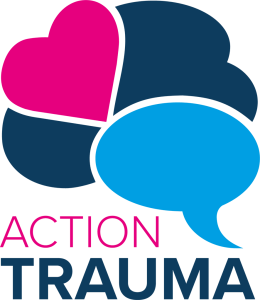Vicarious trauma: Protecting ourselves from work-related exposure to the trauma of others

Vicarious trauma: Protecting ourselves from work-related exposure to the trauma of others
What is Vicarious Trauma?
This term describes the range of ways in which we can be affected by our contact with the trauma of others. The British Medical Association defines vicarious trauma as “a process of change resulting from empathetic engagement with trauma survivors”.
Essentially, it describes the impact of indirect exposure to trauma, which can be through stories or images of traumatic events and experiences, such as accidents and disasters, violence, neglect and abuse. Anyone who works with trauma survivors could potentially experience this type of secondary trauma, including those working in emergency services, health and social care, mental health and psychology, justice, and the community and voluntary sector.
This blog has been designed to give you a taster of the activities so you can start building your own self-care toolkit.
Is vicarious trauma the same as secondary trauma?
The term ‘vicarious trauma’ is thought to have been coined by Laurie Anne Pearlman and Karen W. Saakvitne in their 1995 book, Trauma and the Therapist – Countertransference and Vicarious Traumatization in Psychotherapy with Incest Survivors. They use the term to describe what happens over time when people in the “helping professions” experience a negative shift in their core beliefs about the world, as a result of being repeatedly exposed to indirect trauma, via their work supporting trauma survivors.
“Vicarious” and “secondary” are often used interchangeably when describing this indirect experience of trauma. You may also hear other terms related to the concept, including “compassion fatigue” and “countertransference”.
Dr Beth Hudson Stamm found “there is no routinely used term to designate exposure to another’s traumatic material by virtue of one’s role as a helper” but she provides a helpful definition of Secondary Traumatic Stress Disorder.
Referencing Dr Charles Figley’s proposal to redefine PTSD, she wrote: “[Figley] argued that ‘primary traumatic stress disorder’ should refer to those who were directly in harm’s way. For Figley, ‘secondary traumatic stress disorder’ represents disorders displayed by supporters/helpers of those experiencing PTSD, and ‘tertiary traumatic stress disorder’ applies to the supporters of supporters of those experiencing PTSD.”
What are the symptoms of vicarious and secondary trauma?
Common indicators can include:
-
- Unable to shake feelings of anger, rage and sadness about the individual(s) experience
-
- Becoming inappropriately emotionally involved with the individual(s)
-
- Experiencing ‘bystander guilt’, shame, self-doubt
-
- Becoming preoccupied with thoughts of the individual(s) outside of the work situation (possibly fantasising about horror/rescue scenarios
-
- Over-identification with the individual(s)
-
- Feeling pessimistic, cynical, a loss of hope
-
- Avoidant behaviours, ‘staying busy’, avoiding listening to accounts of traumatic events
-
- Feeling numb, distant, ‘cut off’ or ‘in a bubble’
Protecting people from work-related exposure to trauma
For organisations, it’s a good idea to start by appointing a team or an individual to coordinate your efforts. For individuals managing this for themselves, designate specific time in your working schedule which you will dedicate to managing vicarious trauma.
Managing vicarious trauma will involve:
-
- Protecting ourselves and others from experiencing negative effects
-
- Recognising indicators that we/someone else has been adversely affected
-
- Obtaining diagnosis and effective treatment
Preventing exposure to trauma within the workplace may not be possible, but it may be helpful to explore ways in which it can be limited and/or mitigated. Elements to consider can include staffing levels, working hours, team structure. Audit your available resources and explore all viable options for limiting the amount and/or intensity of secondary traumatic experiences for you and/or your team.
Individuality should be taken into account where possible when accepting or allocating work, to help mitigation. Varying personal worldviews, trauma histories and personalities mean that people’s stories will affect each professional differently.
Ensure you and/or your team take appropriate breaks and holidays from work. Self-care toolkits are an important part of your trauma toolkit. Rest and high-quality sleep, exercise, hydration and nutrition, and social engagement – these basic tenets can greatly increase our resilience to – and recovery from – vicarious trauma.
Regular, high-quality supervision can form part of a strategy for protection, and act as a mechanism for recognising signs and symptoms of traumatic stress, and a valuable monitoring tool. Consider carefully how supervision processes can and should link in with therapy referrals, diagnosis and treatment plans.
Vicarious trauma resources
The International Society for Traumatic Stress Studies partnered with a number of organisations to create the Vicarious Trauma Toolkit (VTT). It’s a comprehensive suite of resources, broken down according to work sector.
The VTT’s creators describe exposure to the traumatic experiences of other people as “an inevitable occupational challenge for the fields of victim services, emergency medical services, fire services, law enforcement, and other allied professionals”. Despite this, they say organisations can mitigate the potentially negative effects by becoming “vicarious trauma-informed”.
Build and maintain your trauma toolkits with the Action Trauma Network’s year-round programme of CPD-accredited webinars and events.



